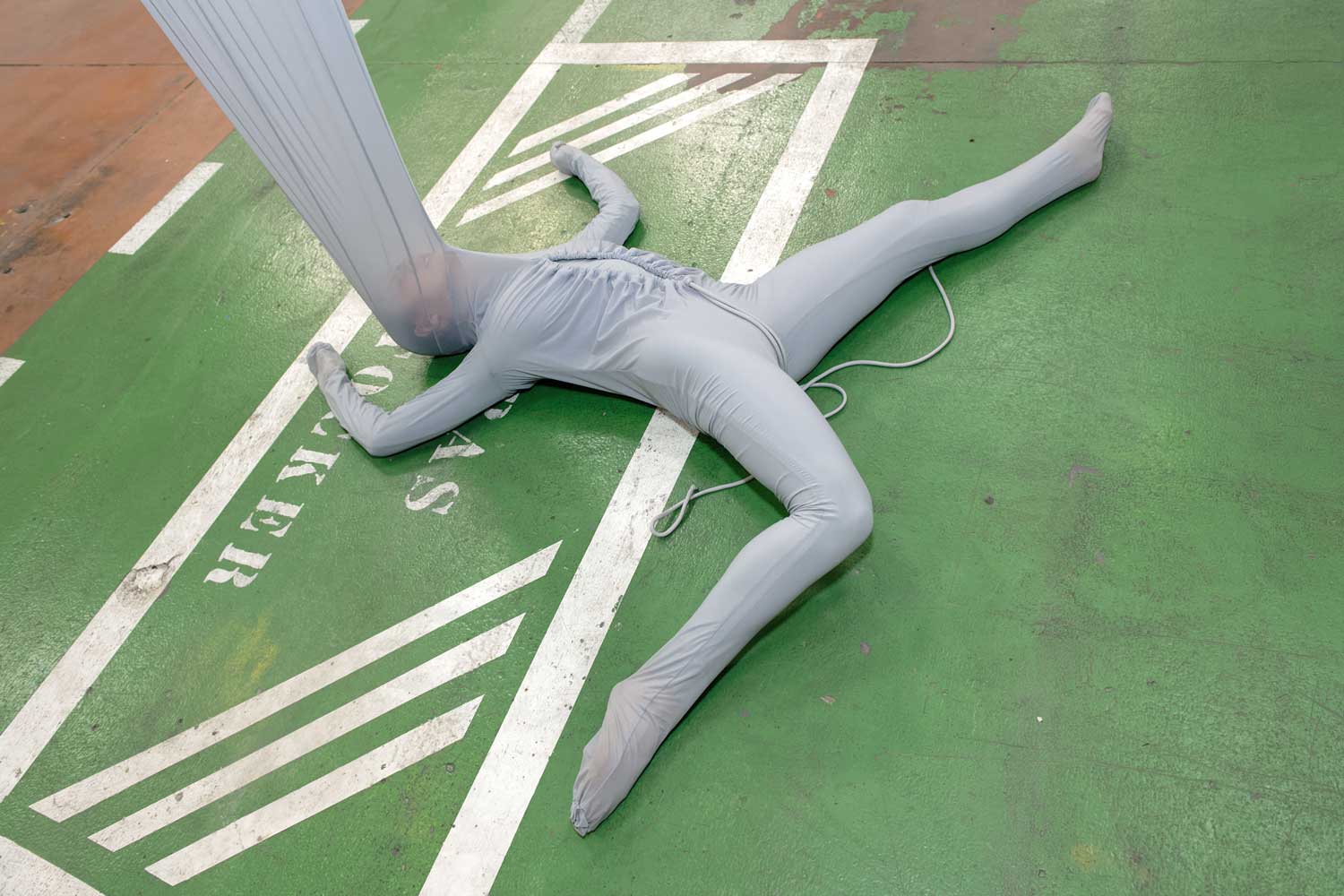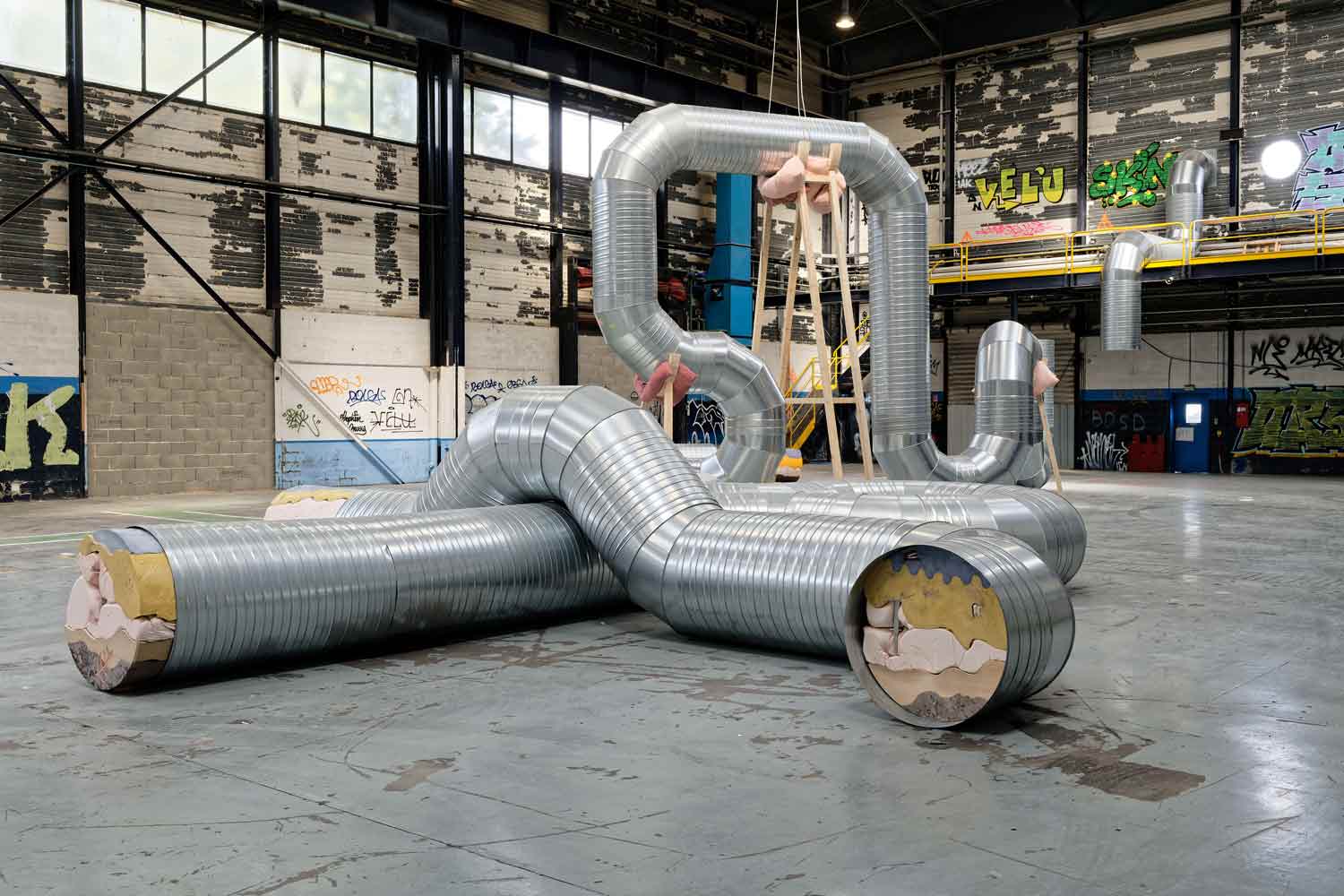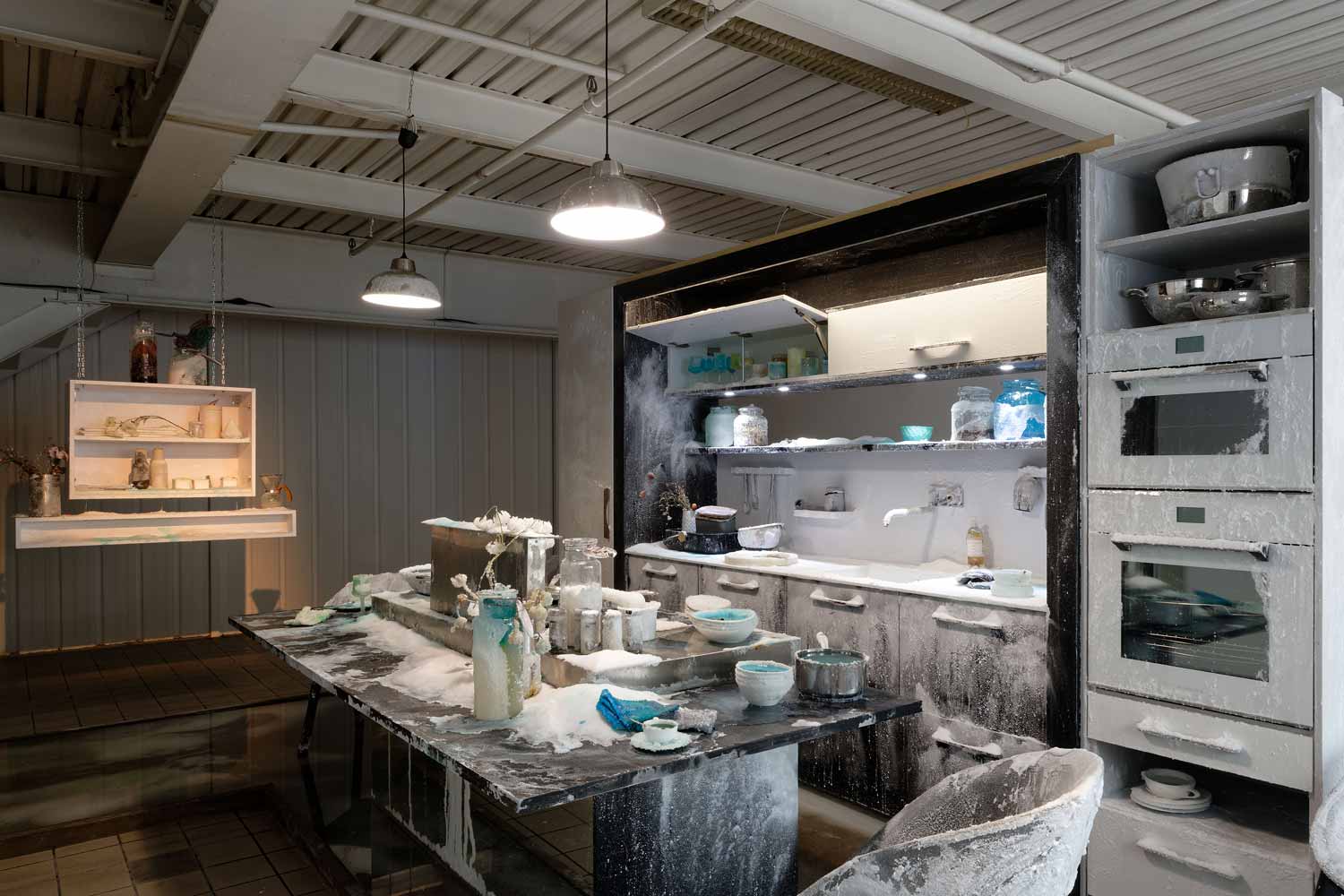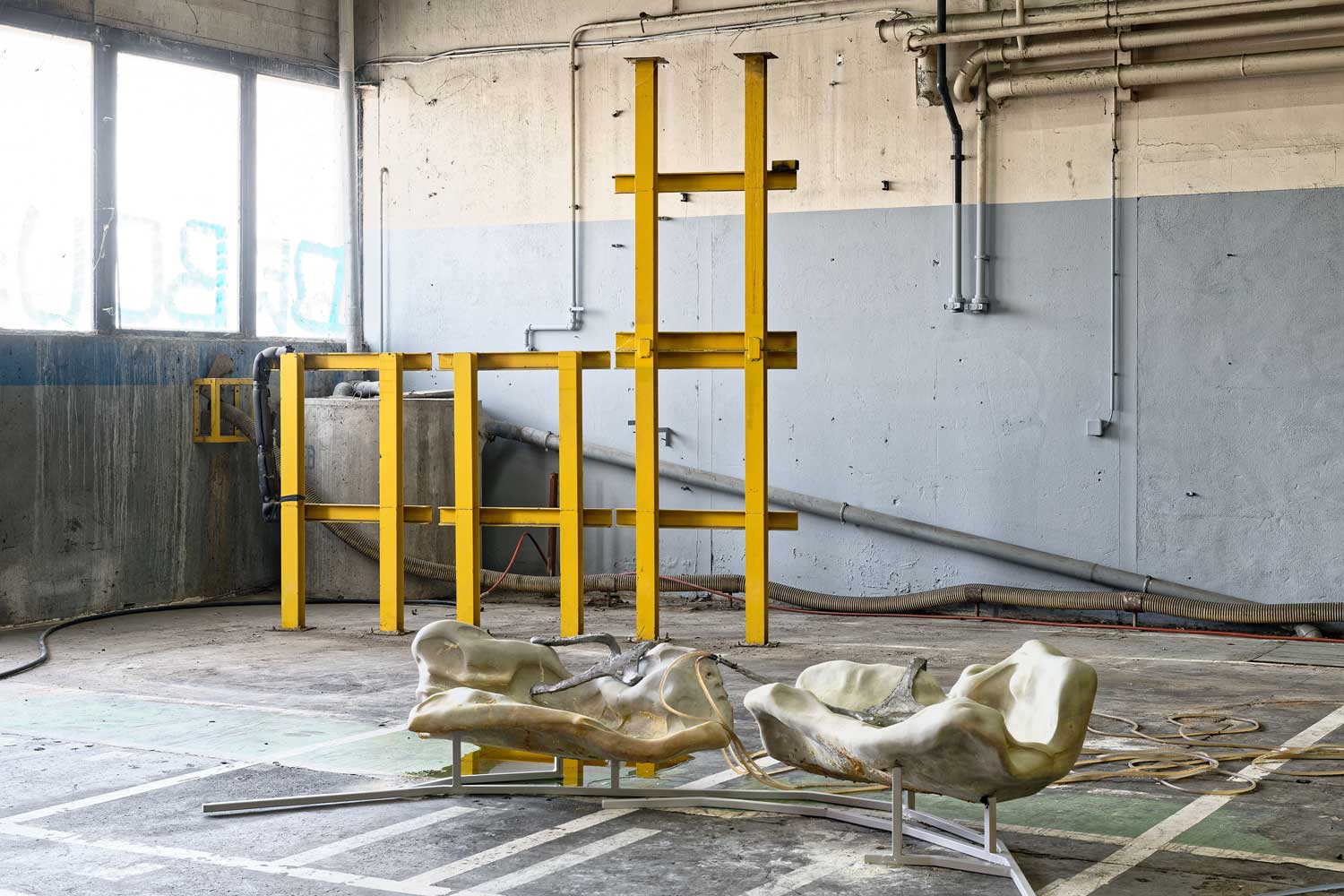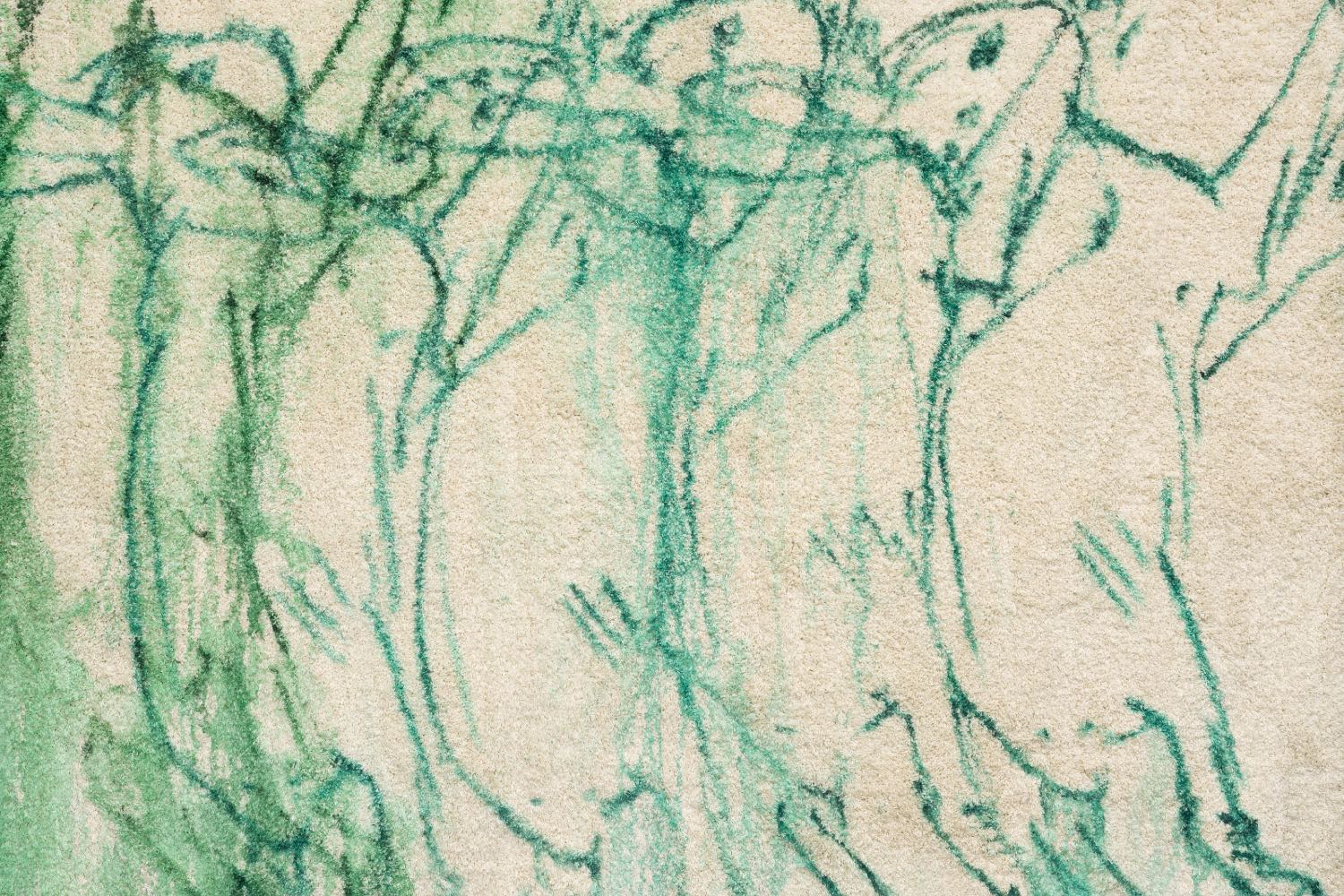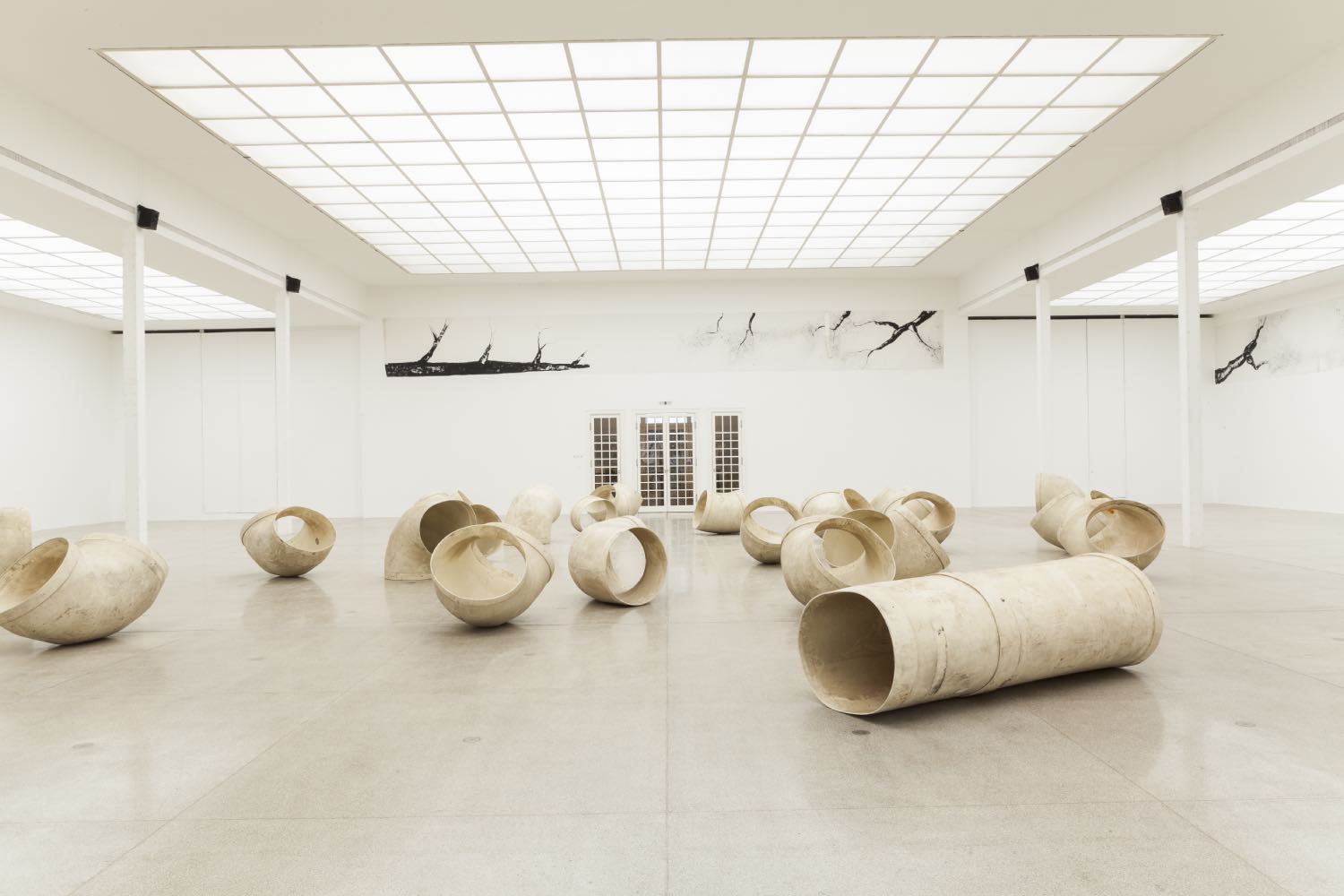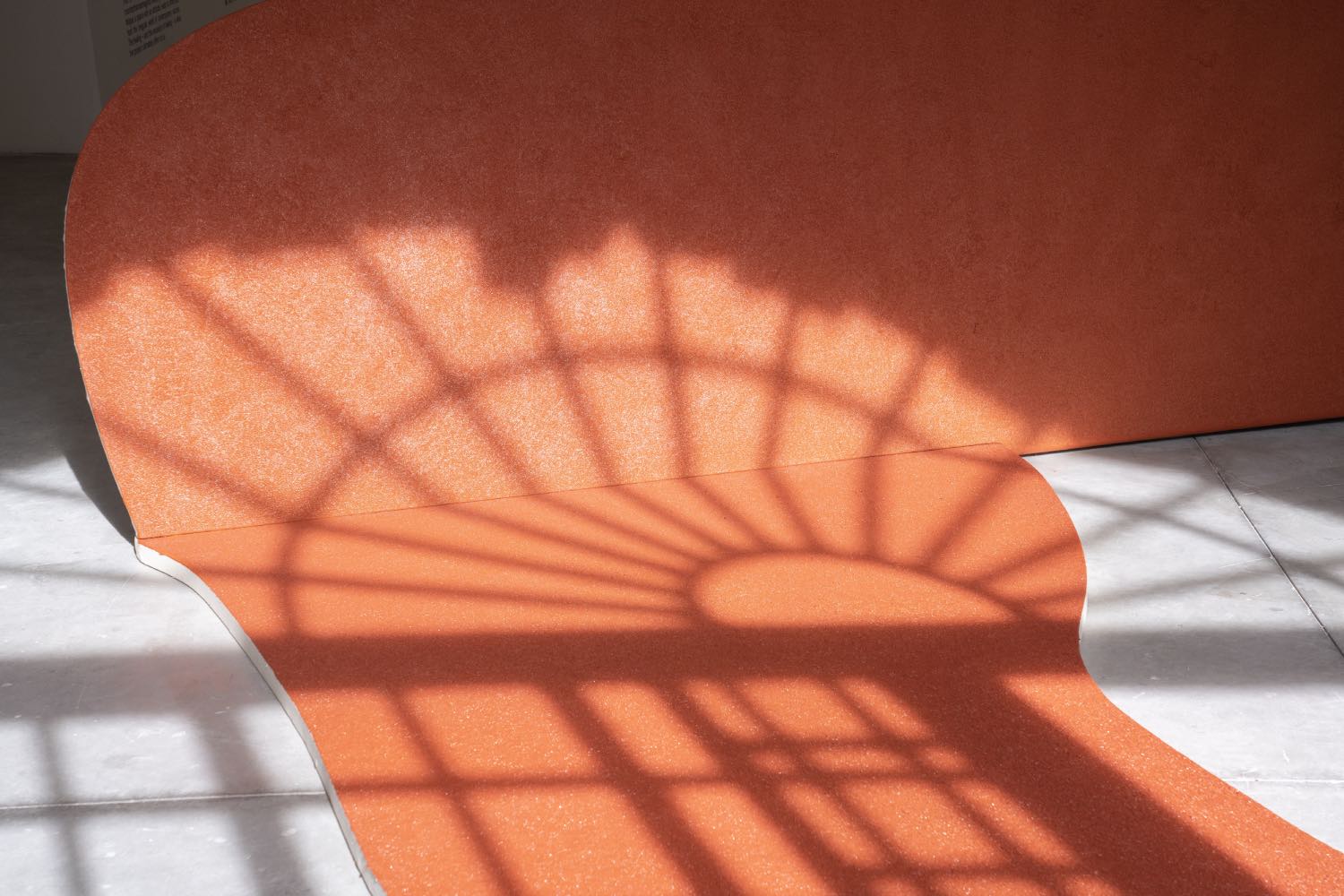It is, no doubt, a measure of biennial oversaturation that one can be deemed a success by what it hasn’t succumbed to. But here you have it: a group of seven curators descended from Palais de Tokyo in Paris and managed to avoid most of the usual pitfalls on their way to organizing the fifteenth edition of the Biennale de Lyon. Where we often encounter a familiar list of artists, most of the names here were new to me. Where things can sometimes get to feeling overcrowded, here there is space to spare, and the participants appear to have had carte blanche in pursuing their sometimes-ambitious projects. And speaking of ambitions: while a biennial will so often occasion the erection of a precarious curatorio-theoretical apparatus on the backs some poor paintings and videos — attributing to them wildly exaggerated political stakes and all kinds of historical and futurological phenomena — the art in Biennale de Lyon, by contrast, is framed by a rather loose sketch of associative themes.
The title of the exhibition — in English “Where Water Comes Together with Other Water” — is taken from a Raymond Carver poem of the same name. The speaker is forty-five years old and loves — I mean absolutely loves — bodies of water: creeks, rills, springs, streams, and, as the title suggests, the confluences most of all. We learn very little about the speaker except that ten years earlier, his or her heart had been “empty and seer,” but by forty he or she was doing fine. In his simplicity of expression, Carver perhaps makes an unlikely inspiration for a show that veers frequently toward the spectacular, but there is a parallel between the poem and the biennial in the exuberance for their respective subjects (water and art), and maybe we can even see an analogue in the evocation of the speaker’s past — which is both laconic and critical — and the historical sensibility of the biennial. Because the title is of course a tribute to Lyon itself, built at the confluence of the Rhône and Saône. The histories of the city are written in those rivers. Though we’re asked at one point in the catalogue to think of flows of goods and people — the river as a medium of commerce and industry — and though a certain suggestion of historical narrative is inescapable given the primary venue, the former FagorBrandt appliance factory, it remains mostly that, suggestive, evocative.
Shuttered in 2015, the factory is an extraordinary space, a vast cavernous sequence of structures. Its presence, though felt and reflected in various ways throughout the exhibition, is most obvious — dumb as it might sound — in the scale at which it allowed, or encouraged, artists to work. (Nearly everything in the show is new, much of it site specific.) Stéphane Thidet, for example, creates a desert (and motocross track) out of truckloads of soil and lime (Le silence d’une dune, 2019) while Sam Keogh dragged in a 230-ton tunnel-boring machine (Knotworm, 2019). Elsewhere artists reach up into the immense space overhead: Malin Bülow put dancers in gray Lycra bodysuits connected to the soaring ceiling, their movements a study in pliability and alien textures. Other participants responded to architectural features of the factory, rather than its sheer vastness. Khalil El Ghrib’s installation (untitled, undated), one of the quietest as well as one of the most arresting moments in the show, consists of quicklime, paper, and cardboard, brittle bone-white packages trussed with colored ribbon, staged beneath a long narrow metal canopy, the only remaining feature of what was once an assembly line. Haunting if somewhat inscrutable, the work itself is ephemeral, slowly disintegrating within a relic of machinery. In a very different tone, Bianca Bondi (The sacred spring and necessary reservoirs, 2019) transformed a kitchen into a pungent, twinkling winter wonderland, covering every surface in a dense coat of salt crystals in order to turn “negative energies [of the factory closure] into positive vibes.”
While Bondi’s alchemy is unlikely to cheer unemployed factory workers, the other part of the equation seems to have already been accomplished for her: the good vibes are here, if you are lucky enough to count yourself part of the creative class. The building is now owned by the city of Lyon and, in addition to the biennial, it hosts electronic music festivals. Much of the work in the exhibition is animated by playfulness or theatricality. You see it, among other instances, in works that mimic or parody mechanical processes. Charming and quirky, Fernando Palma Rodriguez automated a few dozen little girls’ dresses, ascending and descending from a rig in the rafters (Tetzahuitl, 2019). Mire Lee’s Saboteurs (2019) is a massive sci-fi set piece, with a strange gummy substance being slowly churned by motor, elsewhere dripping into a vat of milky white goop. Thomas Feuerstein’s installation felt a bit like the R&D department. A campy and goofily oversized chemistry set, with tubes running everywhere and nowhere in particular and eight-foot-tall glass beakers filled mysterious colorful liquids, Prometheus Delivered (2017–19) may or may not actually be performing the task attributed to it: dissolving a marble statue of Prometheus with stone-eating bacteria, while simultaneously somehow using the same bacteria to “grow an artificial liver for Prometheus.”
These ironic mechanical performances can be hard to read in the former factory. Perhaps no object expresses this inscrutability as much as the washing machine upholstered in pink satin and tufted with Swarovski crystals, a limited-edition collaboration between Vedette (a FagorBrandt brand) and lingerie designer Chantal Thomass from 2006. It’s a bizarre, fascinating, even hilarious object, but what do we make of it? A feminization of the masculinized space of the factory? A symbol of a kind of decadence? The slide of the machine into the realm of design? In fact, I think this murkiness of meaning is a sign of ambivalence toward the idea of the factory in the present. Deindustrialization is an old story at this point — decades old — although one that is now often marshaled in the service of nationalism and racism. But even if it hadn’t been claimed by the far right, nostalgia for industry is hard to maintain on the precipice of ecological collapse.
This too is a familiar story, and decay is of a piece with the biennial’s spectacular exuberance. There are works that explicitly imagine apocalyptic scenarios: Feuerstein, for one, but also Rebecca Ackroyd’s amber airplane crash in resin and steel (Singed Lids, 2019). More widespread still is an interest in entropy: works that crumble, melt, or otherwise disintegrate. In addition to those already described, Isabelle Andriessen’s Ivory Dampers (Battery) (2019) offers a fine example: raised on low-lying metal frames, a couple of lumpy forms are pierced by a network of tubes as some kind of liquid puddles on the floor; though a little light on the details, the sculptures are described as undergoing “a transformation … like organisms infected by a strange virus or eerie mutants from a hypothetical future.” I stepped in it. In fact, I stepped in at least three of the drippier works.

